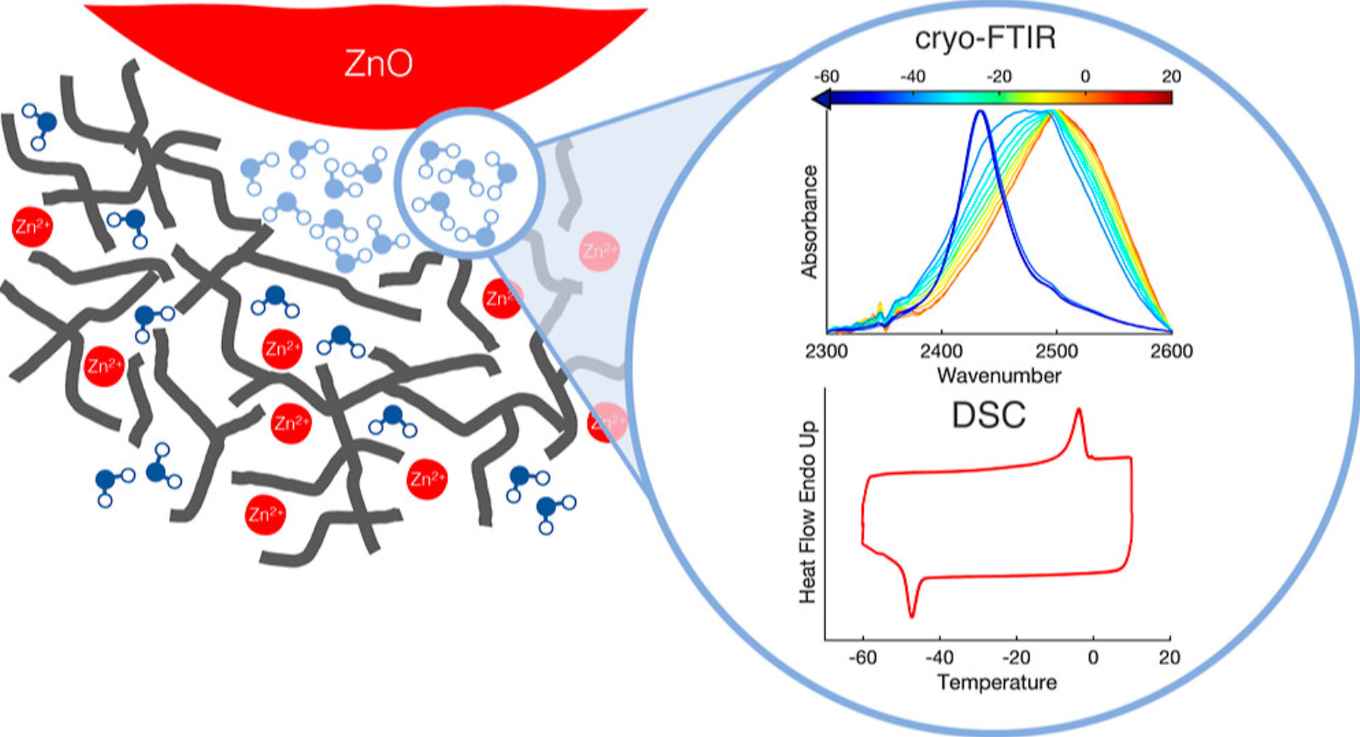Nanoconfined water clusters observed in zinc white oil paint
25 September 2023

Duivenvoorden used a complementary combination of differential scanning calorimetry and cryo-FTIR spectroscopy to detect heterogeneity in water distribution in oil paint at the nanoscale. It revealed that zinc white oil paint can contain molecularly dispersed water in the polymerized oil binder as well as liquid-like water clusters of nanometer-size near the pigment–polymer interface. This has important implications for understanding chemical processes in oil paint. The findings prompt researchers to consider aqueous chemistry when studying paint degradation.
Abstract of the paper
Pigments in oil paint are bound by a complex oil polymer network that is prone to water-related chemical degradation. We use cryo-Fourier-transform infrared spectroscopy and differential scanning calorimetry to study how water distributes inside zinc white oil paint. By measuring water freezing and melting transitions, we show that water-saturated zinc white oil paint contains both liquid-like clustered water and nonclustered water. A comparison of titanium white paint and nonpigmented model systems indicates that water clustering happens near the pigment–polymer interface. The cluster size was estimated in the nanometer range based on the ice melting and freezing temperatures and on the position of the O–D vibration band. As liquid-like water can play a crucial role in the dissolution and transport of ions and molecules, understanding the factors that favor this phenomenon is essential for establishing safe conditions for the conservation of painted works of art.
Paper details
Jorien R. Duivenvoorden, Federico Caporaletti, Sander Woutersen, Katrien Keune, and Joen J. Hermans: Nanoconfined Water Clusters in Zinc White Oil Paint. J. Phys. Chem. C 2023, First published September 15, 2023, DOI: 10.1021/acs.jpcc.3c04720